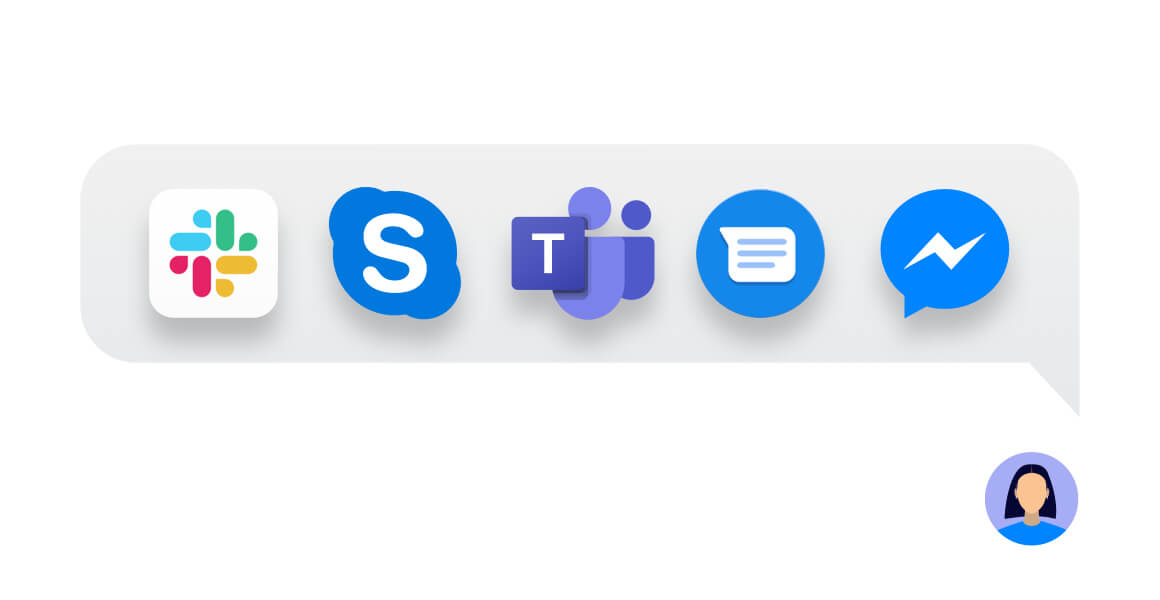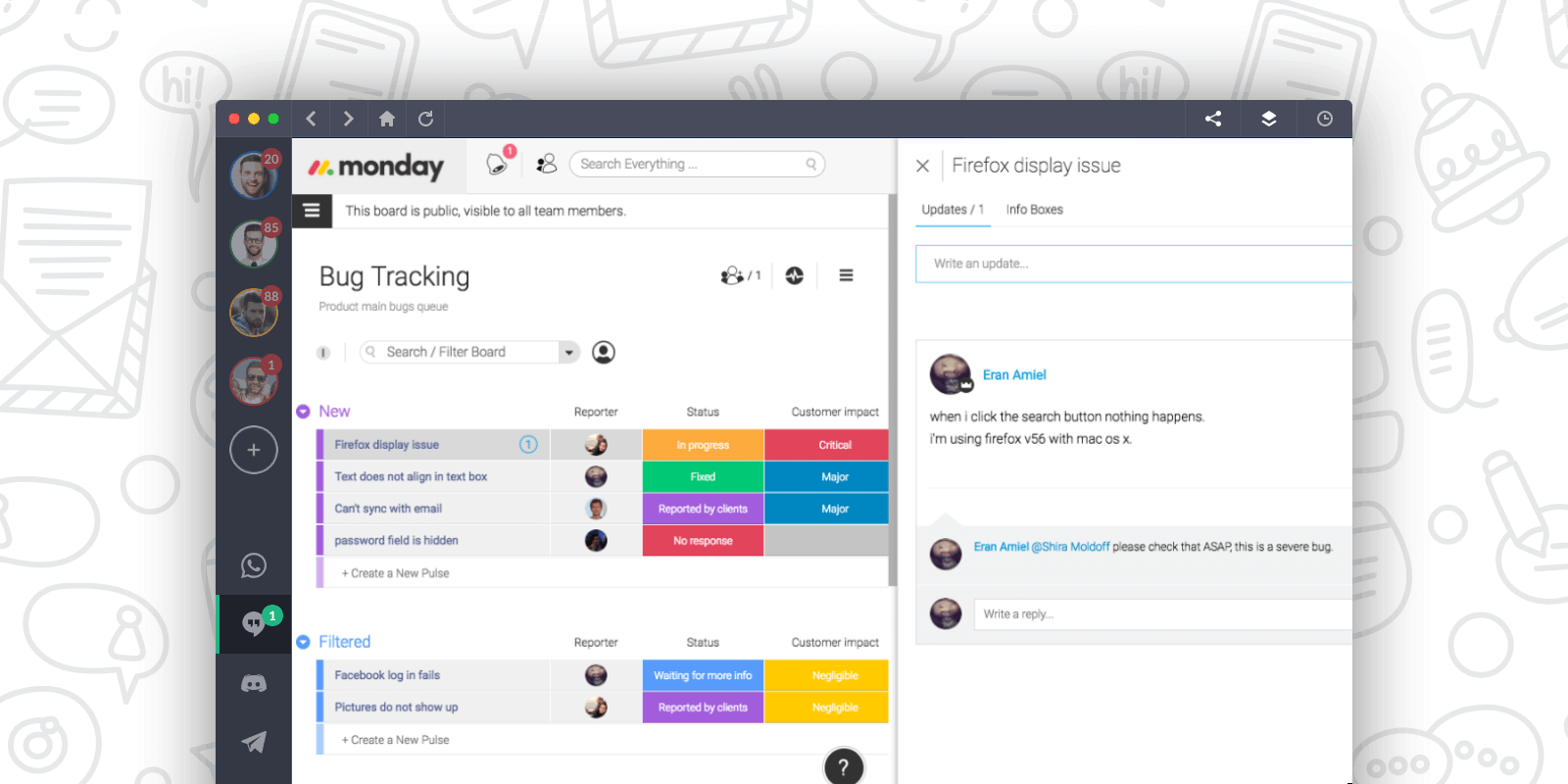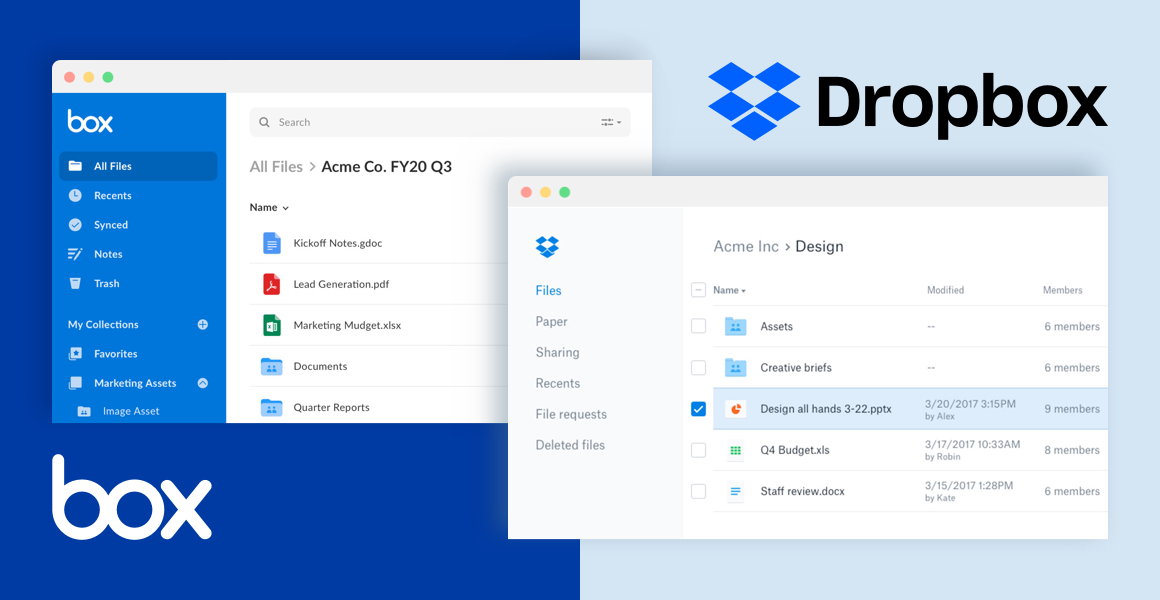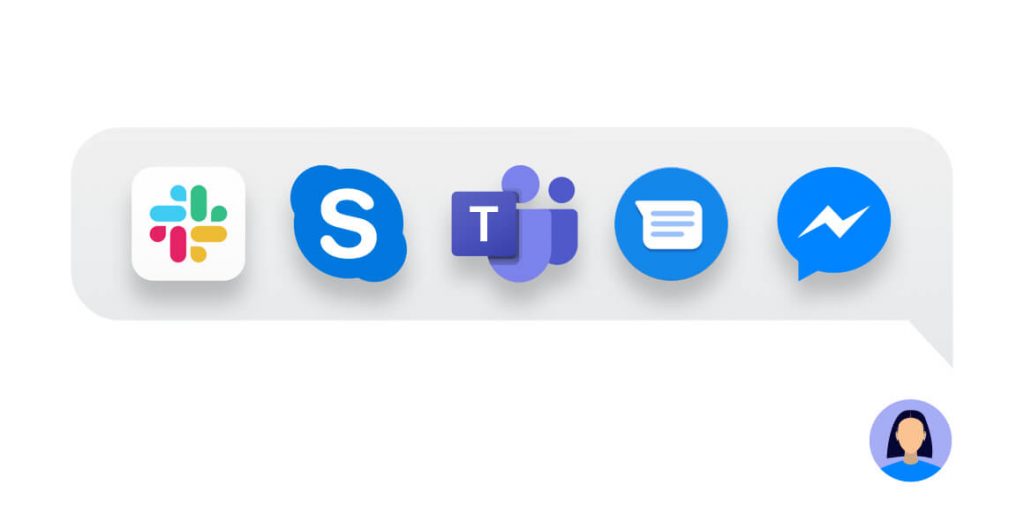Working together is an important part of getting things done. Whether each team member does a separate task or multiple people work side by side to accomplish tasks, at some point, you’ll have to come together as a group. Managing a remote team comes with its own set of challenges when it comes to collaboration.
Over the years, though, the concept of collaborating has changed. No longer do you have to sit around a table or even be in the same building. With the right collaboration tools, your team can stay in touch throughout the day, whether they’re in the office or working from home.
What are Team Collaboration Tools?
Collaboration tools are software apps built to allow people to work together. Whether it be email, chat apps or all-in-one project management tools, teams can use a suite of software to collaborate and help managers keep track of everything. While many of these tools gained their popularity at the workplace, they are growing along with the remote workforce.
Why do Remote Teams Need Collaboration Tools?
Giving your remote workers tools that streamline their workflow, save them time and allow for easy collaboration with their co-workers will make everything run more smoothly. When managing a remote workforce, there are many challenges with meetings, time management and overall productivity. A good manager will provide their remote team with a set of tools that makes these things are easy as if your team was working together in the office. When it comes to collaboration, your team will will thrive if they have the right tools to help with communication via chat and video conferencing, project and task management, file sharing and customer management.
What are the Top Collaboration Tools?
We’ve pulled together a list of all the tools you’ll need to make collaboration work for your remote team.
Top Team Chat Tools for Remote Teams
Email may be the go-to collaboration tool for many professionals, but when you’re working remotely, you need a real-time option. Phone calls force a person to stop everything to chat, possibly disrupting an otherwise productive day. Chat allows team members to reach out to each other throughout the day, with responses coming when they’re available. Often a question can be answered in a matter of seconds, keeping interruptions to a minimum.
But when setting up chat for your remote team, it’s not just the solutions you choose. How you set them up is important, as well. Make sure you shop several solutions and find the one that best fits your own unique virtual environment. You’ll first need to familiarize yourself with the options, then train your team on using them.
Here are a few of our favorite virtual chat tools, as well as tips to help your team make the most of them.
1. Slack
With Slack, effective use for remote teams starts with how you set up your channels. First identify how your remote team will use it, then set up a channel dedicated to each. Monitor channels, especially in the beginning, to make sure channel setups match employee behaviors.

2. Hangouts Chat
If you use Google Hangouts, it has a built-in messaging platform. A tool like this makes it easy to shift between communication styles throughout the day.
3. Microsoft Teams
Like Google Hangouts, Microsoft Teams sets you up to vary your communication throughout the day. You can easily move from group chat to videoconference with just one click.
4. Facebook Messenger
Any of your team members who use Facebook are likely already familiar with its messaging tool. But Facebook Messenger for Business is especially useful if you want your team to be able to provide customer support through the platform.
Updated Article: The Best Team Chat Apps

Top Video Conferencing Tools for Remote Teams
Plenty has been written about the effects body language has on workplace communication. In fact, you can do far more with a smile and direct eye contact than with a four-paragraph email. Working remotely with a full team makes that tough, though, leading to the disconnection some employees feel. Having a good videoconferencing tool is vital for virtual teams to work effectively.
Videoconferencing is a close simulation to being in the same room. With the right tool, you can meet as a group. You can also share your screen and allow team members to reserve meeting times. But as with any tool, you’ll need to set up guidelines and encourage team members to remain active on various apps.
Here are some videoconferencing platforms we think you’ll love.
1. Zoom
Zoom has become one of the most popular videoconferencing tools for a reason. Team members can easily join a meeting, whether they’re on a computer or mobile device, and the free version allows meetings of up to 100 participants.
2. Hangouts Meet
As with Google Hangouts’ chat tool, Hangouts Meet lets your group get together from wherever they are. Using the app, you can easily schedule meetings directly from your Google Calendar, and it also integrates with the rest of G Suite.

3. Skype
You’re probably already familiar with Skype’s features, but the Skype Group Video Chat tool rivals Zoom and is especially useful for business teams. You can gather up to 50 people in one chat using the free version.
Updated Article: The 12 Best Video Conferencing Apps

Top Project Management Tools for Remote Teams
Whether you’re working in an office or remotely, a good project management tool is the key to success. Just the act of laying all your projects out on a virtual board can help you organize everything. You’ll then add your team members and assign tasks to each project, which you can then delegate as needed.
But as professional project managers know all too well, the right tool means little if there isn’t someone staying on top of things. Choose a tool that prompts team members as deadlines approach and make sure you have someone monitoring progress toward your bigger goals.
To help get you started, here are some of our favorite project management tools.
1. Basecamp
Basecamp’s setup makes it easy to create projects and add team members. When someone looks at a project, all the necessary information is displayed in one place, including discussions and files. That makes it easy for everyone to keep up with what’s going on in real time.
2. Asana
Asana works well for organizations with more than one team. Simply create teams for each of your projects or work areas and add the members working on them. Your employees can also add themselves to a team.
3. Flow
Workflow visualization tools can help keep you on track. Flow lets you set up a series of checklists attached to tasks, with those tasks associated with a specific project. You can track the progress of each of your projects in the dashboard, quickly identifying those items that need immediate attention.
4. Jira
Software development teams have used collaboration software for years, typically in the form of either Scrum or Kanban boards. Jira is a user-friendly tool that brings all the most popular layout options to development teams, along with bug tracking and other tools unique to the coding environment.
5. Monday
The list-based interface of Monday makes it popular with those who visualize more linearly. You can also use Monday to automate repetitive processes and save your team time.

6. ProofHub
ProofHub is an all-in-one software that brings various aspects of project management and online collaboration together. It works well for teams of all sizes, be it in-house or teams that are working remotely. You can add tasks with deadlines, create custom workflows, have real-time discussions, review files and annotate them using markup tools, and do a lot more with this easy-to-use software.
Top Task Management Tools for Remote Teams
For many people, to-do lists are the key to getting things done. Sometimes merely the task of writing things down helps you organize your thoughts and feel more in control. However, there are tips that can help you make effective lists, including breaking them into categories and prioritizing tasks to keep these lists from overwhelming you.
One way to manage your teams to-do lists better is to use the right app. Not only will you benefit from the many features built into these apps, but you’ll also have access to your list from your smartphone, which allows you to take it with you.
Here are some of the most popular task management apps for your consideration.
1. Evernote
Although Evernote is a note-taking app, its task lists are very useful. Best of all, you can tie your to-do lists to notes you already have in the app. The business version of the app is available for $14.99 per user per month and allows your team to collaborate on notes and task lists.
2. Habitica
Gamification has become a popular way to get things done. With Habitica, you turn your to-do lists into fun tasks. When you reach your goals, you get a reward. You can also link up with coworkers or friends and compete to plow through your to-do list.
3. Microsoft To-Do
If you’re an Office 365 user, you may not realize you already have a great to-do list app included in your suite of tools. Microsoft To-Do lets you make lists, break tasks into steps, and share your list with others. It syncs with Outlook Tasks to make it easier to keep up with everything.
4. Notejoy
Color coding is the key to using Notejoy, which helps you create checklists and incorporate images for a little visual appeal. Mention someone in the app and they’ll see the task and be able to join in on existing conversations.
Top File Sharing Tools for Remote Teams
When employees are working separately, access to shared files is essential. Yes, you can share files through email and collaboration tools, but it’s also important to have a central repository. There, employees can save files and quickly locate shared documents they need.
In recent years, an increasing number of businesses have made the switch to cloud-based file storage. One benefit of this setup is that documents are available from anywhere, using any device, as long as the person has been granted access. You’ll also find that cloud storage provides backup for all your documents, which means no matter what, your valuable information remains safe.
Here are some of our favorite cloud-based file-sharing solutions.
1. Dropbox
Dropbox has evolved over the years, adding features that makes it perfect for teams. Team-geared features include Dropbox Paper, which lets you assign tasks and collect ideas directly within the app. You’ll also find a handy commenting system where team members can leave and view feedback in real time.
2. Box
Don’t limit your file sharing thinking to word processing documents and spreadsheets. Box lets you save presentations, videos, and other types of files, as well. You can share files and drop comments directly within the app to keep other team members aware of what’s going on.
3. Onehub
If you’re looking for a way to move your existing infrastructure to the cloud, Onehub is the best choice for you. Onehub maintains your existing folder and file setups to migrate you with minimal disruption. Once your files are stored, your team can access them and collaborate on projects in real time from within the platform.
4. Wistia
Not all files are documents. As businesses have moved toward video, demand has increased for cloud-based storage to hold these much larger files. Wistia not only stores your videos but creates a library you can share with your team and even external customers. You can customize the player and set it up on your website or internal portal to ensure visitors can always find the latest content.
Related Article: Box vs Dropbox

Top CRM Tools for Remote Teams
Customers are the heart and soul of many businesses. Whether your customers are fellow businesses or the general buying public, it’s important to maintain a database of names and contact information. Over the years, contact tracking has evolved from Rolodex-based notecards and basic databases to customer relationship management (CRM) software, and that software has evolved itself.
Today’s tools can integrate with your existing communication and collaboration solutions. This means when an employee pulls up a contact, all previous interactions are logged in real time, reducing the risk of duplicate effort. That information can also be deposited into your project management or collaboration tools to save everyone time.
When managing a team remotely, finding the right CRM is essential. Here are a few of our favorites.
1. Salesforce
If integration is a priority, you can’t go wrong with Salesforce. It integrates with popular platforms of every type, from communication to collaboration and beyond. You can even link it up with your financial software to track billing and payment information.
2. 1CRM
For small or midsized businesses, 1CRM’s affordable plans may work better with your budget. For only $12 per user per month, you can bring in up to 750 leads, get daily emails, track products and inventory, and more. Lead forms and appointment scheduling can get you set up to build and grow your business.
3. HubSpot
Businesses with marketing, sales, and customer service teams often choose HubSpot’s outreach-geared software. HubSpot has mastered the art of growing traffic and converting business, and its platform is geared to meet the needs of businesses across all industries.
4. SugarCRM
SugarCRM follows each interaction from start to finish, creating an overall picture of the customer lifecycle. This insight makes it easy to build lasting relationships with existing customers, while also giving you the data you need to track down and convert new customers.
Tips for Team Collaboration
Working remotely provides a set of challenges that can be overcome with a combination of the right tools and the right team. Collaboration tools are an important aspect, but the teams ability to communicate effectively has the most impact. Here are a few tips for improving team collaboration while working remotely:
- Daily stand-ups are easy to run over video, just ensure that they are brief and only for small groups.
- OKR’s (Objectives and Key Results) ensure that everyone is working towards the same goal.
- Schedule virtual fun time to keep things light. Make it optional but make it something that co-workers will want to join.
Tips for Managing Remote Teams
Managing a remote team requires a different skillset than leading a group that works together in an office. It can be challenging to ensure that your team outputs the same amount and quality of work while working from home. Use these tips to help manage your remote team:
- Communicate regularly with your team and ensure that you’ve recently touched base with everyone on you manage.
- Stay organized and implement new systems and processes that streamline your workflow.
- Use the right tools for the right situations. Your old tech stack may not cut it anymore.
Collaborating Remotely with Shift
Staying organized is essential to remaining on track when you’re managing a remote team. With the right tools, you can take your business to the next level, whether you’re in the office or working from home. Once you have the lineup of tools you need, Shift can bring it all together in one place, making it easy to move from one application to the next. Find out how Shift can help your business work remotely.

Ten articles before and after
The Ultimate Guide to Working Remotely with Slack
7 Ways to Recover and Recharge as a Busy Entrepreneur
Announcing Visme, Liveweb, Typedesk & 40 New App Integrations
Zoom vs Skype: Video Conferencing Software Showdown
Zoom Tips: How to Use Zoom Meetings for Remote Video Conferencing
The Best Deals and Resources for Organizations Dealing with Covid-19
How Virtual Teams Communicate Effectively
How to Stay Productive and Focused While Working From Home
The Best Software Discounts for Nonprofits
Top Apps for Taking Your Team’s Productivity to the Next Level
